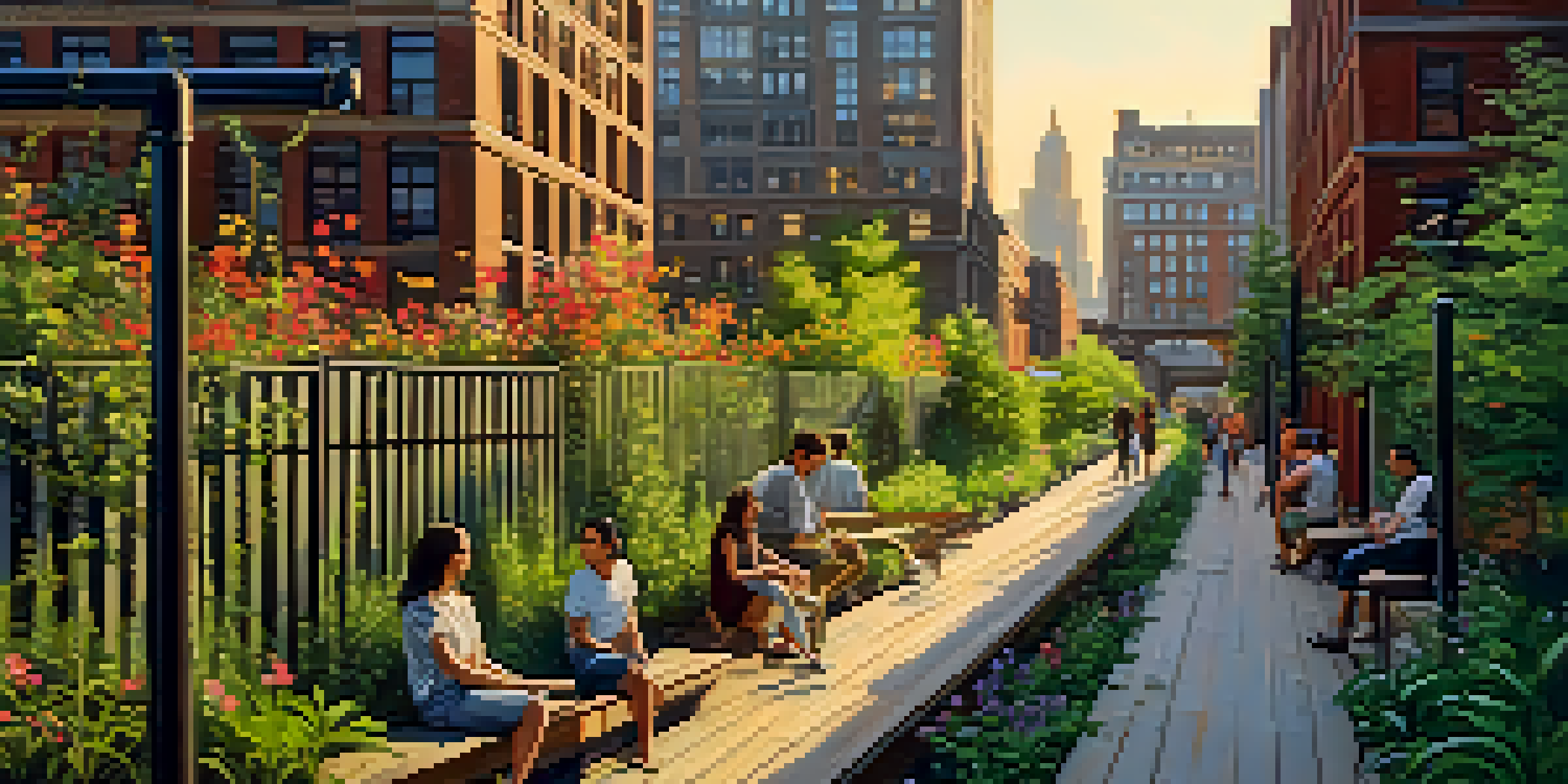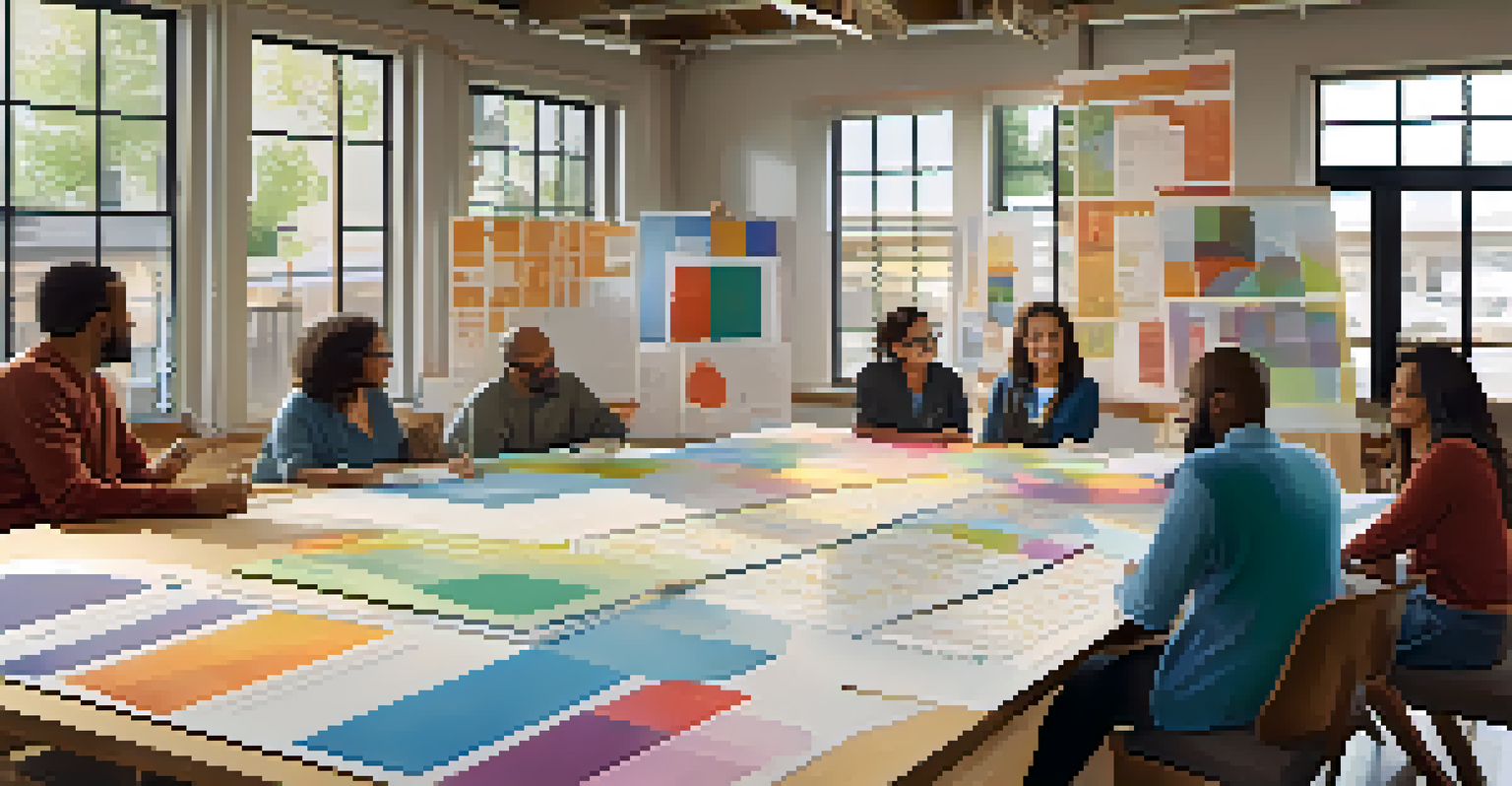Urban Regeneration: Revitalizing Historic Neighborhoods in NYC

Understanding Urban Regeneration and Its Importance
Urban regeneration refers to the process of revitalizing and redeveloping urban areas that have fallen into disrepair. It's not just about tearing down old buildings; it's about breathing new life into neighborhoods while preserving their unique character. In NYC, this practice plays a crucial role in maintaining cultural heritage, fostering community engagement, and promoting economic growth.
Urban regeneration is not just about rebuilding; it's about rebuilding communities and creating a sense of belonging.
By focusing on existing infrastructure, urban regeneration can help reduce waste and the need for new materials. This approach makes cities more sustainable, allowing them to thrive without sacrificing their historical roots. For residents, this means improved living conditions and a stronger sense of community, as they see their neighborhoods transform while still feeling connected to their past.
Moreover, urban regeneration often involves collaboration among local governments, businesses, and residents. This teamwork ensures that developments are tailored to the needs and desires of the community, creating spaces that reflect their identity and aspirations. In essence, it's about striking a balance between progress and preservation.
Showcasing Successful NYC Urban Regeneration Projects
One of the most notable examples of urban regeneration in NYC is the High Line, a former elevated railway transformed into a vibrant public park. This project not only revitalized a neglected space but also spurred economic development in the surrounding areas, attracting new businesses and residents alike. It stands as a testament to the power of innovative thinking in urban design.

Another successful initiative is the revitalization of Brooklyn's Dumbo neighborhood. Once an industrial hub, Dumbo has transformed into a trendy area filled with art galleries, tech startups, and waterfront parks. This transformation was achieved while respecting the area's rich history, creating a balance that appeals to both locals and visitors.
Urban Regeneration Revives Communities
Urban regeneration transforms neglected areas into vibrant neighborhoods while preserving their unique character and history.
These examples illustrate that urban regeneration can lead to thriving communities that honor their past while embracing the future. They show how thoughtful design and community involvement can create spaces that are not only functional but also foster a strong sense of belonging.
Challenges Faced in Urban Regeneration Efforts
Despite the benefits, urban regeneration isn't without its challenges. One of the primary issues is gentrification, which can displace long-time residents as property values rise and new developments emerge. This often leads to a loss of cultural diversity and community identity, creating tension between old and new inhabitants.
The city is not a concrete jungle, it is a human zoo.
Additionally, funding and resources can pose significant hurdles. Urban regeneration projects often require substantial investment, and securing the necessary financial backing can be difficult. Without adequate funding, even the best ideas can struggle to get off the ground, limiting their potential impact on the community.
Lastly, balancing the interests of various stakeholders can be complex. Residents, businesses, and government entities all have different priorities, and finding common ground is essential for successful regeneration. Open communication and collaboration are key to overcoming these challenges and achieving sustainable outcomes.
The Role of Community in Urban Regeneration
Community involvement is a cornerstone of successful urban regeneration. When residents actively participate in the planning process, it ensures that developments truly reflect their needs and desires. This engagement not only fosters a sense of ownership but also builds stronger connections among neighbors, enhancing social cohesion.
For instance, community workshops and meetings allow residents to voice their concerns, share ideas, and collaborate with planners. This grassroots approach can lead to innovative solutions that might not have emerged otherwise, ensuring that regeneration efforts are both practical and inclusive.
Community Involvement is Key
Active participation from residents in the planning process fosters ownership and strengthens community bonds.
Furthermore, when people feel heard and valued, they are more likely to invest emotionally and physically in their neighborhoods. This sense of pride can lead to volunteer initiatives and local events, further enriching the community and reinforcing the positive impacts of urban regeneration.
Preservation vs. Modernization: Finding the Right Balance
One of the most pressing debates in urban regeneration is how to balance preservation with modernization. While it's essential to maintain historical sites and structures, there is also a need for innovation and adaptation to contemporary needs. Striking this balance can be challenging, yet it is vital for sustainable urban growth.
For example, integrating modern amenities into historic buildings can enhance their usability while preserving their aesthetic appeal. This approach allows neighborhoods to evolve without losing their distinctive charm, creating spaces that appeal to both new and long-time residents.
Ultimately, the goal is to create a harmonious blend of old and new, where history informs the future. Successful urban regeneration should respect the past while also embracing innovation, ensuring that neighborhoods remain vibrant and relevant in an ever-changing world.
The Economic Benefits of Urban Regeneration
Urban regeneration can significantly boost local economies. By revitalizing underdeveloped areas, cities attract businesses, create jobs, and increase property values. This economic uplift can lead to improved public services and infrastructure, benefiting all residents.
Take, for instance, the transformation of Harlem, which has seen a resurgence in both residential and commercial investments. As new businesses open their doors, they not only create jobs but also help stimulate the local economy, supporting existing establishments and fostering a vibrant community atmosphere.
Economic Growth Through Revitalization
Revitalizing urban areas boosts local economies by attracting businesses, creating jobs, and enhancing property values.
Moreover, successful urban regeneration often leads to increased tourism. As neighborhoods become more attractive and accessible, they draw visitors eager to experience unique cultural offerings. This influx of tourists can provide a substantial boost to local businesses, contributing to a thriving economic ecosystem.
Looking Ahead: The Future of Urban Regeneration in NYC
As NYC continues to grow and evolve, the future of urban regeneration will play a crucial role in shaping its neighborhoods. With an increasing focus on sustainability, future projects are likely to emphasize green spaces, eco-friendly materials, and energy-efficient designs. This shift not only benefits the environment but also enhances the quality of life for residents.
Additionally, the integration of technology into urban planning can streamline regeneration efforts. Smart city solutions, such as improved transportation systems and digital community engagement platforms, offer new ways to connect residents and enhance urban living. These innovations can make cities more responsive to the needs of their inhabitants.

Ultimately, the future of urban regeneration in NYC lies in its ability to adapt and respond to the changing needs of its diverse population. By fostering collaboration, embracing sustainability, and prioritizing community involvement, the city can continue to thrive while preserving its rich history.